Name of the site: Lixketa
Protection categories: Listed as Protected Non-developable Land due to its Environmental Value (Wetlands) in Navarre’s Land Planning Programme 1 “Atlantic Navarre”.
Location: Belongs to the municipality of Baztan.
Region: Navarre
Coordinate reference: 30TXN2270
Surface area of the wetland: 1.54 hectares.
Altitude: 675 metres.
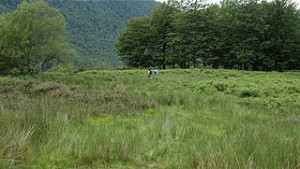
This site, which covers approximately 1.54 hectares, is on the northern slope of Monte Argintzu and is surrounded by beech trees. A larger and somewhat heterogeneous main area with several outflows and other smaller areas, to the east, with damp soil and consisting of willow woodland (Salix atrocinerea) can be identified.
Mats of sphagnum are found in the larger area. In this area, a distinction can be made between the part which drains to the north, with a small channel of discontinuous, but fairly marked flow, filtered in the beech woods, and the part that drains to the west via the neighbouring meadow. This latter part collects the water from several small springs and has been partially modified, with drainage ditches. Willow woodland consisting of Salix atrocinerea and Alnus glutinosa has taken hold at the point where this larger area comes into contact with the beech woods. The damp area also continues into the meadow, although the flower composition changes, with a predominance of meadow plant life.
- MOST IMPORTANT VALUES
Uniqueness
Lixketa is unique due to its oligotrophic and markedly acid nature.Biological and ecological values
Lixketa is remarkable for the surface area occupied by mats of sphagnum with cross-leaved heath and other characteristic species pertaining to the Habitats of Community Interest “6410 Molinia meadows on calcareous, peaty or clayey-silt-laden soils (Molinion caeruleae)” and “7140 Transition mires and quaking bogs”. The presence of singular flora is also noteworthy, particularly the fern Dryopteris carthusiana and the hepatic Odontoschisma sphagni.Historical and paleoecological values
The peat-forming habitats at the Lixketa site do not have significant deposits from a paleoecological viewpoint.Habitats of Community Interest
Hábitat 4020* Brezales húmedos atlánticos de zonas templadas de Erica cillaris y Erica tetralix 6410 Prados con molinias sobre sustratos calcáreos, turbosos o arcillo-limónicos (Molinion caeruleae) 7140 «Mires» de transición Flora
The proliferation of Narthecium ossifragum is significant at Lixketa, albeit not so spectacular as at the Azaldegi site. When it comes to flora, however, the most noteworthy presence is that of the fern Dryopteris carthusiana. Similarly noteworthy is the absence of species native to highly eutrophic, waterlogged areas, such as Anagallis tenella, Carex demissa, C. panicea, Juncus articulatus and Pinguicula grandiflora. Molinia caerulea, such an abundant species in mire environments, both in waterlogged areas and on promontories and in amongst heathland, is scarce at Lixketa.
As for bryophytes, the most noteworthy presence is that of the hepatic Odontoschisma sphagni.
51 species of vascular plant and 20 bryophyte species, seven of which are sphagnums, have been registered.Fauna
To date, no presence of significant species of fauna has been recorded in the peat-forming habitats at Lixketa.- PHOTOS
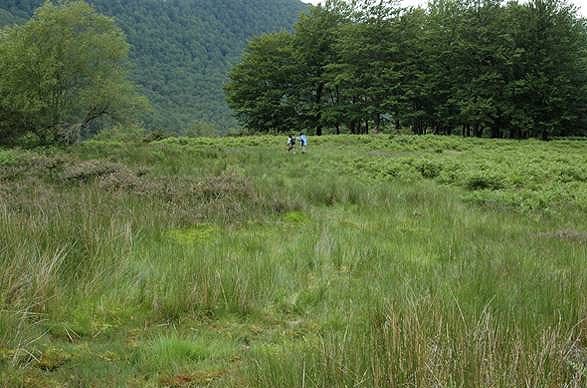
General view of Area A towards the West. (P. Heras)
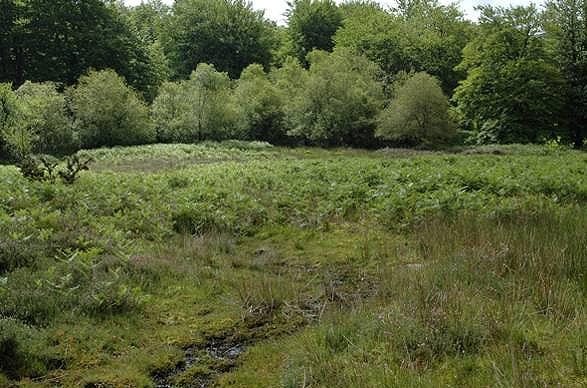
General view of Area A towards the South with border of Salix atrocinerea in the background and stream bed/drainage stream in the foreground. (P. Heras).
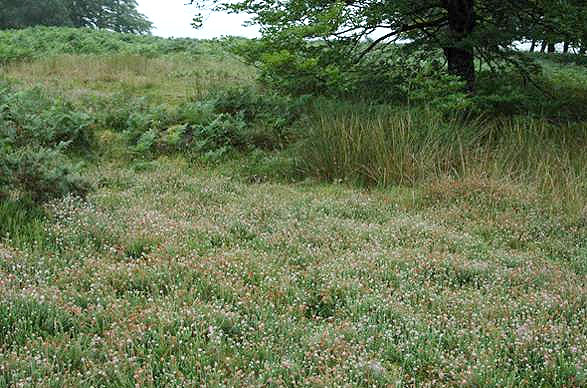
Heathland with Sphagnum. (P. Heras)
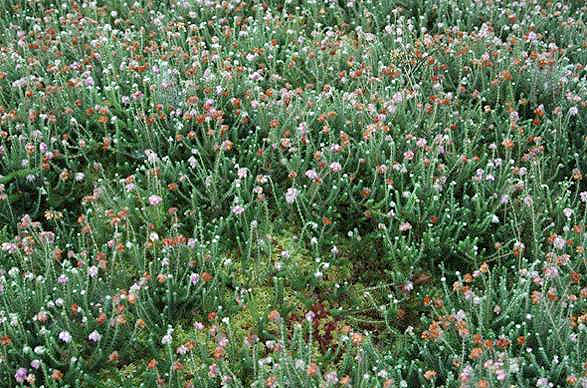
Detail heathland with Sphagnum, Erico-Sphagnetum papillosi. (P. Heras)


